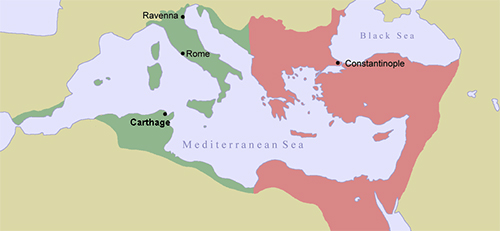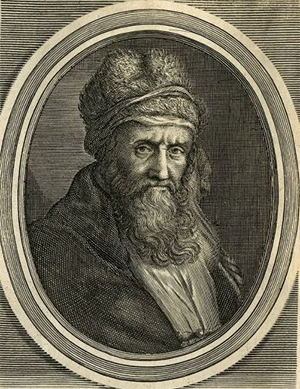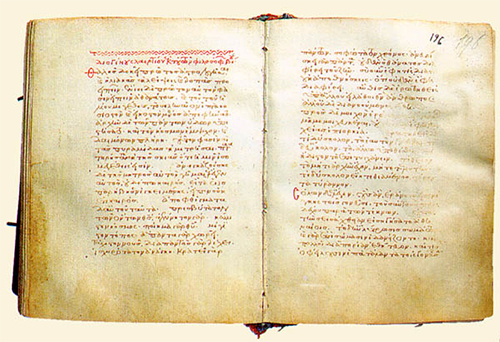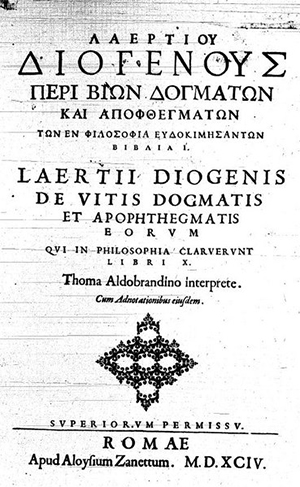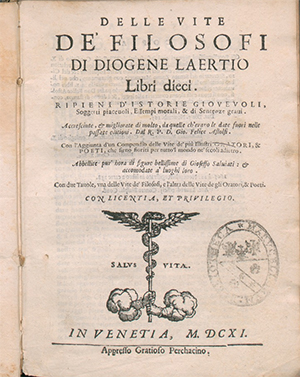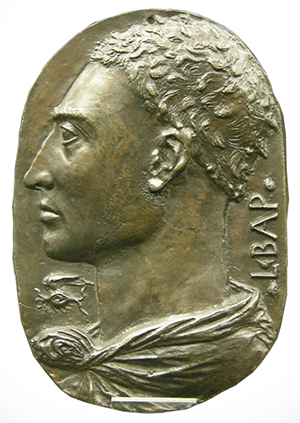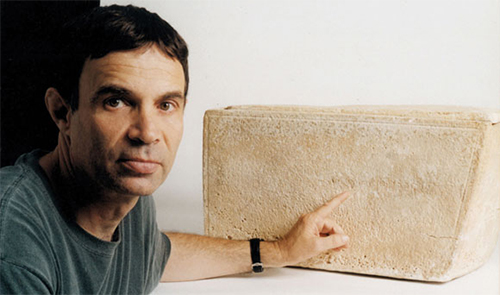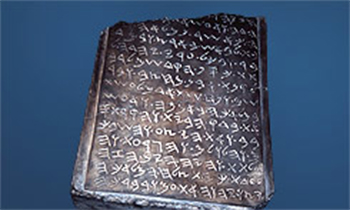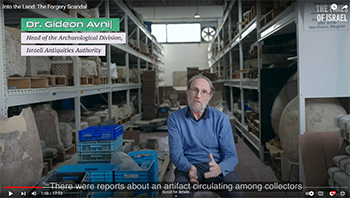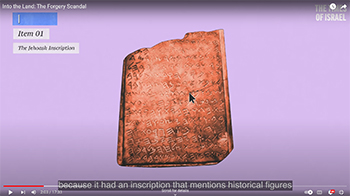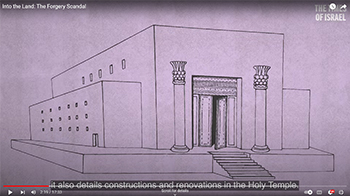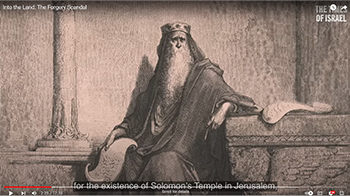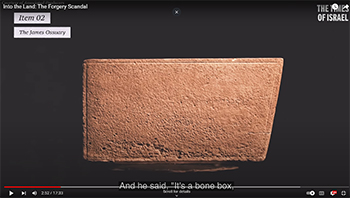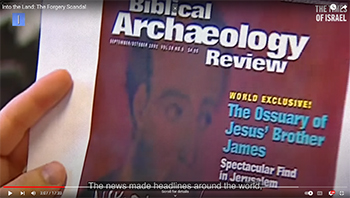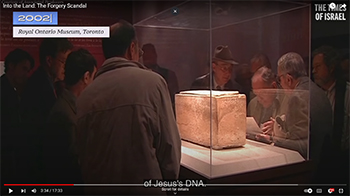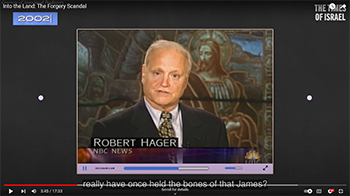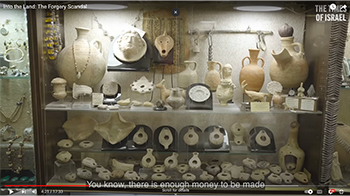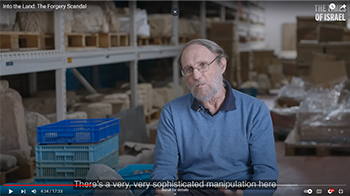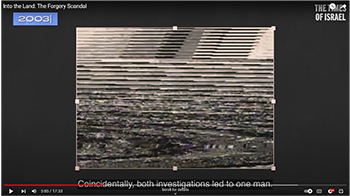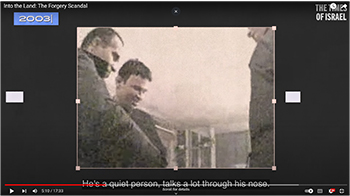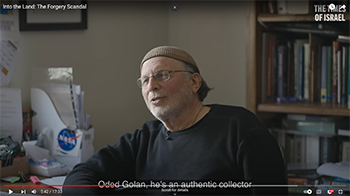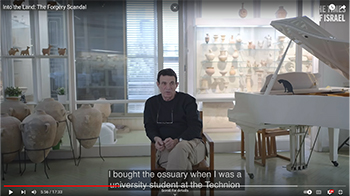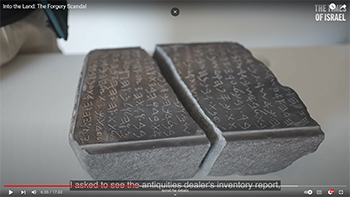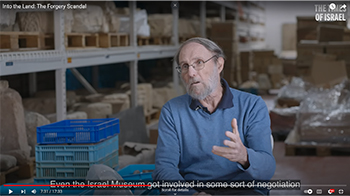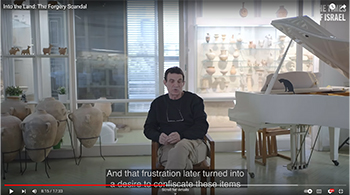by Rosa Lorito
From Defining Authorship, Debating Authenticity: Problems of Authority from Classical Antiquity to the Renaissance
Edited by Roberta Berardi, Martina Filosa, and Davide Massimo
© 2021 Walter de Gruyter GmbH, Berlin/Boston
NOTICE: THIS WORK MAY BE PROTECTED BY COPYRIGHT
YOU ARE REQUIRED TO READ THE COPYRIGHT NOTICE AT THIS LINK BEFORE YOU READ THE FOLLOWING WORK, THAT IS AVAILABLE SOLELY FOR PRIVATE STUDY, SCHOLARSHIP OR RESEARCH PURSUANT TO 17 U.S.C. SECTION 107 AND 108. IN THE EVENT THAT THE LIBRARY DETERMINES THAT UNLAWFUL COPYING OF THIS WORK HAS OCCURRED, THE LIBRARY HAS THE RIGHT TO BLOCK THE I.P. ADDRESS AT WHICH THE UNLAWFUL COPYING APPEARED TO HAVE OCCURRED. THANK YOU FOR RESPECTING THE RIGHTS OF COPYRIGHT OWNERS.
In the period between Diocletian and Julian a new form of imperial government was established.1 Diocletian's reforms aimed to strengthen the Empire after years of deep crisis: this involved, in particular, tightening the relationship between central imperial authority and the provincial governor, representative of the sovereign in provincial territory. As a consequence, the emperor's power reached deeper at places far from the court.2
The Volcei land-register (CIL X 407) is an enigmatic source that offers insight into this empire-wide development. Its authorship is uncertain. Most scholars identify L. Turcius Apronianus, corrector Lucaniae et Brittiorum, member of a very important senatorial family. If so, this would be the only evidence Apronianus held this office, and would further demonstrate that one of the duties of a provincial governor, in this case the corrector Lucaniae et Brittiorum, was to compile the land register of the territories under his control.
This essay has two aims. Firstly, it will suggest that its composer was indeed L. Turcius Apronianus, and secondly, that this enriches our understanding of the structure of imperial government and the tasks of governors after Dioeletian's reforms, as well as the role of the great families that held the power in Italian territory. Moreover, the inscription adds to our knowledge of the chronology of the governors of Lucania et Brittii.
The text is engraved on a limestone table (73 x 160 x 25 cm). It is now to be found in Buccino, in the tower of the castle, but was probably originally set up in the forum.3 The present panel of text -- itself not fully preserved -- was accompanied by others at its sides, and below it, but these are lost. Moreover, a space was left after the third line of the third series of possessions. A new fragment from the facade of a private house, published in 2016 and measuring 39 x 18 cm, with letters 3 cm high, corresponds to the final part of the text here below.4
CIL X 407 (Volcei) = InscrIt III 1.17 cf. SupplIt III 1987, 67-68 + SupplIt III 1987, 76-77 nr. 5 = AE 1988, 412 = HD008204 = EDR080936 13/05/1997 (Niquet)
[Ex princi)pio saero dd(ominorum) nn(ostrorum) Constantini Maximi vener[andi et Licini Augg(ustorum) / [nobilis]simorumque Caesarum Vulcelanae ci[vitatis pagis qui infra sunt/ / [Acllio Se]vero et [Vet]t[io] Rufino connss(ulibus) per Turci[um - - - adscriptae? sunt] / [millenae] MMDCCCCXCI // [- - -] X / [- - -]X / [- - -]X] / [- - - X]VI[- - -]VIII / [- - -] XV / [- - -]LXXX / [- - -]XVII / [- - -]XI / [- - -]XV / [- - -]IIII / [- - - XI] [- - -] // F(undus) Maceriatus m(illenae) LVI (f(undus) Marcellianus m(illenae) LVI / f(undus) Micerianu[s m(illenae)] X / f(undus) Casinianu[s m(llienae)] X / k(asa!) Oppiana [m(illenae) II] / k(asa!) Postumia [m(illenae)I] / iug(era) quinquaginta p(ublica?) [m(illenae) I]III / pago forensi [m(illenae) DCCCVIII] / f(undus) publica m(illenae) XI (f(undus) Perscenianus m(illenae) XIIII / f(undus) Pupianus m(illenae) VIIII / f(undus) Agellus [m(illenae)] XIIII [// F(undus) Vefeianus m(illenae) XVII / f(undus) Fuficianus c(um) sal(tibus) m(illenae) XVIIII / f(undus) Curianus m(illenae) XVIII / [f(undus)] Furianus m(illenae) XL / agellus sup(erior) m(illenae) X / agellus inf(erior) c(um) nob(ali?) m(illenae) X / [f(undus)) Mecianus m(illenae) XVI / [f(undus)] Donianus m(illenae) XLVII / [pago] Narano m(illenae) MCLXXXIII / [- - -] m(lilenae) VIII / pr(atus) Sicinianus c(um) p(ertinenciis?) m(illenae) CXX / f(undus) Viscifeianus m(illenae) XX / f(undus) [- - -]us [m(illenae)] XIIII [// F(undus) Tuaenus m(illenae) XLV / [f(undus)] Ferocianus m(illenae) XII / f(undus) castra m(illenae) XXIII / f(undus) Dor[nian]us m(illenae) XXVI / f(undus) Modianus m(illenae) XXVIII / k(asa!) Korviana(!) m(illenae) XII / f(undus) Aequarica c(um) per(tinenciis?) m(illenae) [X]XVIII / f(undus) Clo[dl]ianus m(illenae) XXXVI / [f(undus) Sc]e[ta]nus m(illenae) XL / f(undus) Vene[r]ianus m(illenae) XXIII / f(undus) Auric[i]us m(illenae) XXVIII / f(undus) campu[s] Nar(anus) m(illenae) XL / pago Aequan(o) [.// F(undus) Muscinianus m(illenae) [- - -] / f(undus)
Euporia[n]us m(illenae) [- - -] / f(undus) Ceronianus m(illenae) [- - -] / f(undus) Oppianus m(illenae) X[- - -] / pago Tra(n)samunc(lano) m(illenae) I[- - -] / f(undus) Cefrianus m(illenae) X[- - -] / f(undus) Cesi(ni]anus m(illenae) [- - -] / f(undus) Vivianus m(illenae) X[- - -] / tab(ula) Augustaliana m(illenae) X[- - -] / f(undus) [Vi]solitanus m(illenae) LX / f(undus) Pater[ia]nus m(illenae) X[- - -] / f(undus) Venat[ri]nus m(illenae) X[- - -] / f(undus) Caelinus m(illenae) X / f(undus) Da[su]vius m(llienae) X[ // ]I[- - -] / [- - - p]retio [- - -] / [- - -]VAE[- - -] / f(undus) Gentian[us - - -] / f(undus) Siccit[ianus - - -] / f(undus) Cagati[anus - - -] / ff(undi) Sileda[ni
In I. 3 the word Turcium is partially missing. The titulus was placed in 323, as we can tell from the consuls named just before.5
The text certainly represents census records, and conforms to the form prescribed by Ulpian in the Digest.6 If we compare it to other known censuses, however, it becomes clear that the Volcei table was less comprehensive in its detail: indeed, we find the taxable amounts, listed in millena (quantities of a thousand at a time), indicated by the letter M, but both the names of the landowners and their tax assessments are missing. By contrast, these are present in the land-register from Magnesia in Asia Minor, while there the villages are not enumerated. According to Duncan-Jones, this portion of the inscription presents a list of 36 farms, and is connected in some way to Diocletian's revision of taxation: the drawback of this register is, however, that it lists individual farms, some of which were probably owned by the same owner. Furthermore, we do not have the total number of millenae recorded in the register, so we cannot be sure how much of the text is missing. Vera, analyzing the data for the fundi and pagi listed in the text, suggests that as much as two thirds of the text is missing, and that it would have originally listed 160/180 predials. If so, the list would have been far longer, and covered territory including all the pagi of Volcei, and all its landholdings. As to the function of inscription, on the other hand, Vera doubts its identity as a land register, rather preferring to see it as a mere 'tax list', on the basis of the fact that it differs in character from the two main forms of land register current in the east at the time, in both its generic form, and aims (for which see above). It is difficult to be sure about this, due to the highly fragmentary nature of the text, and the fact it is our sole example of a western land register.7
The identification of Turcius in the text, as well as the function of this individual within the document, pose problems. Champlin, for example, argued that Turcius is L. Turcius Apronianus, a Roman senator of local origins, praefectus urbi in 339, and that he is presented here as a landowner, and not as the governor of the territory. The transcript produced by Mommsen in CIL X 407 and analysis in Inscrit III 1, 17 suggests that the missing portion of the text included additional information about his role. Crucially, it is clear that there is enough space for corr. While Champlin thought that there was too little room for the usual formula c.v., corrector Lucaniae et Brittiorum, this is not a serious obstacle, as governors are in fact usually named in inscriptions by their title alone, which in this case would have been corrector. We have several examples of this among inscriptions concerning governors in the Italian regiones. Claudius Uranius, corrector Flaminiae et Piceni, is simply called a corrector.8 [- - -]meius, governor also of Flaminia et Picenum, is likewise only called consularis,9 while Fabius Maximus is presented only as a rector, probably of Samnium;10 Brittius Praesens11 and Q. Sattius Fl. Vettius Gratus,12 both probably governors of Lucania el Brittii, are just called corrector. Moreover, Champlin claims that Turcius was the only owner of the lands in the list because there are no other names to be found in it. Bracco, however, associates this inscription with the colonatus, and argues that the names of the coloni were incorporated with those of the fundi, thereby suggesting a link between the coloni and the lands. For this reason, the tax-amounts refer to their coloni, thereby explaining why their names are not quoted in the list.13 Vera has since argued against Champlin as well, and proposes a different solution both to the identity and role of Turcius in the text: in a new fragment published in 1987, it is possible to read the non-initial letters ... VAE... in line 3, which may be restored as Q[VAE]STOREM. Following this reading, this way, this Turcius Apronianus would have been a namesake of the praefectus urbi of 339, a mere quaestor executing the imperial will.14 This is possible, if we compare the text of the new fragment to the one in CIL X 407. As suggested already, however, there is enough space for corr., even if the fragmentariness of the text does not allow us to choose decisively between these two options.
Unlike Vera, I believe that we can identify Turcius with the senator L. Turcius Apronianus, of the family of the Turcii, and that this man was a corrector. There are two main reasons for this. For one, L. Turcius Apronianus was certainly a praefectus urbi, as is clear from other epigraphic evidence attesting to him,15 and the holding of a governorship was one of the main avenues to reaching this office. There are, moreover, many examples of praefect urbi whose cursus honorum involved governorships in the Italian provinces.16 It is therefore highly likely that he held some role as corrector at the beginning of his career. Secondly, as we can see from the evidence for the duties of Italian governors in the Later Roman Empire, correctores, consulares and praesides had responsibilities in the area of tax-collection,17 and it is this field of action to which the present inscription belongs.
It is therefore highly probable in my view that the Turcius listed in this document is identical with L. Turcius Apronianus, that he was a corrector and that it is in this capacity that he drew up the list contained in this document.
This hypothesis is accepted by PLRE18 and Cecconi, even if with some hesitation,19 both of whom include him among the governors of Lucania et Brittii, and regard this inscription as the only testimony for L. Turcius Apronianus' office as corrector Lucaniae et Brittiorum. From the consular dating in the inscription, then, we can affirm that he was corrector Lucaniae et Brittiorum in 323.
This conclusion has consequences for our chronology of the governors of Lucania et Brittii because it allows us to reconstruct the order of governors in this territory between Diocletian and Julian, which should now be the following:20
Governors of Lucania et Britii from Diocletian to Julian
C. Pius Esuvius Tetricus / corrector / after the Autum of 274
Claudius Plotianus / corrector / 313
Rufinus Octavianus / corrector / between 315 and 319
Maecilius Hilarianus / corrector / 316
Brittius Praesens / corrector / beginning of the 4th century
L Turcius Apronianus / corrector / 323
Alpinius Magnus s. Eumenius / corrector / between 324 circa and 326
Attius Caecilius Maximilianus s. Pancha-rius / corrector / before 357
Q. Sattius Fl. Vettius Gratus / corrector / before 364
L. Turcius Apronianus, praefectus urbi, was the father of two sons: L. Turcius Apronianus Asterius,21 praefectus urbi in 363-364 and, among the other offices, corrector Tusciae el Umbriae, and L. Turcius Secundus Asterius,22 corrector Flaminiae et Piceni. His own father was L. Turcius Secundus,23 who had been clarissimus vir, and a consul. Turcius, therefore, came from a senatorial family. Like other governors of the Italian provinces, he was the most important representative of the emperor for the people of the region, and would have had various tasks, not only in the field of tax-collection.
The sources for praesides, correctore/rectores and consulares in the period between Diocletian and Julian show common features in the activities of these three categories of governor, even though the charge of consularis was the most prestigious by far. First of all, it is interesting to notice that all were involved in the administration of public works; this was especially true of correctores/rectores.24 They were also in charge of religious buildings25 and the honouring of the emperors and their familles.26 Furthermore, they had duties in other aspects of public life,27 and most importantly in the judicial sphere,28 where they had the authority to torture and inflict capital punishment on those they deemed guilty.29
The Turcii held a position of prominence among the senatorial families of the 4th century. They were of ancient origin, like the Anicii, Perronii, Aurelii, to whom the Symmachi belonged, and the Nicomachi, Valerii and Aradii. They had links to other families, too, such as the Brittii, to whom they were related through marriage, or the Ceionii, that belong to the group of ancient families listed above.30 Studying the families that ruled some of these regiones is very useful for understanding the relationships between the central power and provincial government: many governors belonged to families of the senatorial aristocracy, and were related to one another. Moreover, members of the same family were sometimes governors of the same territory within the space of several generations, or, alternatively, governed different regiones at the same time, as we see with the family of L. Turcius Apronianus.31
The family group composed of the Turcii, the Brittii (or Bruttii), and the Ceionii dominated the governorships of the Italian provinces.32 This pervasive presence of the aristocratic families would seem to present administrative risks, but its benefits were prized over its weaknesses: by relying on local families with strong local roots and networks of respect the emperors could control Italian territory more effectively. It would seem, indeed, that rulers used the local prestige of several noble families, and of the governors that came from them, to consolidate their rule in the provinces, and better adapt imperial policy to regional conditions.
The so called Volcei land-register (CIL X 407) is therefore a document of great importance. If the interpretation offered here about its originator, that this was L. Turcius Apronianus, are justified, this inscription stands to illuminate aspects of the history and government of Lucania et Brittii and, in general, of tasks of the Italian governors, and their role in 4th-century imperial government. Moreover, we gain further insights into the role of the senatorial families from which these governors hailed, and the dynamics between the central power and local communities.
Many problems of interpretation still remain, however, and it is hoped that future research will shed more light on them.
Jones dates it to 307, cf. Duncan-Jones (1976) 17.
_______________
Notes:
1 For the events that led to the provincialization of Italy, see the following works: Porena (2013) 329-31, on the situation of Roman Italy between the Social War of the 90 BC and the crisis of the 3rd century; Giardina (1993) 53-54 and 56-58, on the attempts to control Italian territory before the 3rd century; De Martino (1975 [2]) 800-35, on the administration of the provinces during the Empire; Mazzarino (1973 [2]) 568-71, Silvestrini (1993) 187-91, on the reunification of the Empire. For the period from the rise of Aurelian to the Empire of Constantine, cf, Potter (2004) 268-400, where the author wants, in general, to find hints of the decline of the Roman Empire in the two centuries 180-395, with a particular focus on the cultural, intellectual and political history of this period. For economic reforms from Aurelian to Constantine, cf. Carrie (1983) 283- 322. On military anarchy, cf. Jones (1973-4) I 40-60; cf. also Mazzarino (1973 [2]) 570-4. For the argument that provincialization began in the years leading up to Diocletian's assumption of power, see Mazzarino (1973 [2]) 573; Giardina (1997) 277-9, 298-9; Giardina (1993) 61-63, 66-67; Porena (2006) 9-21; Porena (2013) 334. From now onwards, every date is to be considered AD.
2 For the emperors between Aurelian and Diocletian, and the chronology of the years 275-85, in the transition from the principatus to the dominatus, cf. Polverini (1975) 1013-35; for the political evolution of Diocletian's reign, cf. Chastagnol (1994) 23-31; on the tetrarchy, instead, cf. Corcoran (2000); Feissel (1995) 33-53; Kolb (1995) 21-31; Marcone (2000) 3-17. On the various aspects of late antique administration, cf. Grelle (1986) 37-56. For Diocletian in general, cf. Jones (1973-4) 61-109. in particular 67-79 on the administration under this emperor; Grelle (1993) 78- 81, also, on the administrative organization under Diocletian, and further Kuhoff (2001); Rees (2004); Roberto (2014).
3 Vera (2016) 106.
4 ------] / [---]I[---] / [--- p]retio [---] / [---]VAE[---] / f(undus) Gentian[us ---] / f(undus) Siccit[ianus --_] / f(undus) Cagati[anus ---] / ff(undi) Silecia(ni ------
5 Chron, 354, MGH IX 1, 67; cf. Degrassi (1952) 79, CLRE 1987 180; Cecconi (1994) 219. Duncan-
6 Ulp. Dig. 50.15.4.
7 Duncan-Jones (1976) 17-18, 20; Champlin (1980) 13-18; Bracco (1984) 105; Russi (1999) 532, n. 280; Porena (2005) 205-46; Vera (2016) 108- 10; 122-4. Unlike the general view, Vera interprets M as modius and not as millena, cf. Vera (2016) 112-22. Finally, on the situation described by the Volcei land-register as a consequence of the evolution of the ancient agrarian economy, see Vera (1994) 239-48.
8 AE 1937, 119(Amiternum).
9 AE 1904, 52 (Superaequum).
10 AE 1972. 150 (Telesia); CIL IX 2212 = ILS 5690 (Telesia); CIL IX 2447 (Saepinum); CIL IX 2956 = ILS 5341 (Iuvanum); CIL IX 2957 = ILS 5521 (Iuvanum); CIL IX 2338 = ILS 5691 = Allifae 23 (Allifae).
11 AE 1978, 262 (Velia); CIL X 468 (Leucosia).
12 AE 1923, 61 = AE 1923, 62 (Regium Iulium).
13 SupplIt III 1987, 67-68.
14 Vera (2016) 110-2.
15 CIL VI 1768 = ILS 1229; CIL VI 1769; CIL VI 1772 = ILS 1230 (Roma); CIL XI 6218 = ILS 706 (Fanum Fortunae); CIL XIV 3582 = ILS 729; CIL XIV 3583 (Tibur). CIL VI 1655 (Roma) is about him or his son L. Turcius Apronianus Asterius, cf. PLRE I. Apronianus. He is quoted as praefectus urbi also in Chron. 354, MGH IX 1 68, cf. Chastagnol (1962) 105-7.
16 There are several examples of correctores that became praefecti urbi in the same period: for Lucania et Brittii, for instance, we find Maecilius Hilarianus, who was praefectus urbi from the 13th of January 338 to the 14th of July 339 (CTh 9, 19, 1; CTh 12.1.3; Chron. 354, MGH IX 1, 68; cf. Chastagnol (1962) 103-5; PLRE I, Hilarianus 5); cf. Clemente (1969) 619-44, especially 625.
17 See, just for the period between Diocletian and Julian, Septimius Theodolus, corrector Venetiae et Histriae (CIL XIII 10027.69 = ILCV 84a-b (Ellelum), if exac(- - -) is exactus); Auxonius, corrector Tusciae (CTh 8, 1, 6); Rufinus Octavianus, corrector Luaniae et Brittiorum (CTh 16, 2, 2); Iunius Rufus, consularis Aemiliae (CTh 4, 13, 1); Ulpius Flavianus, consularis Aemiliae et Liguriae (CTh 11, 16, 2); Dulcitius, consularis Aemillae (CTh 13, 10, 3); Lupus, consularis Campaniae (Symm. Rel. 40.3.5).
18 PLRE I, Apronianus 9.

